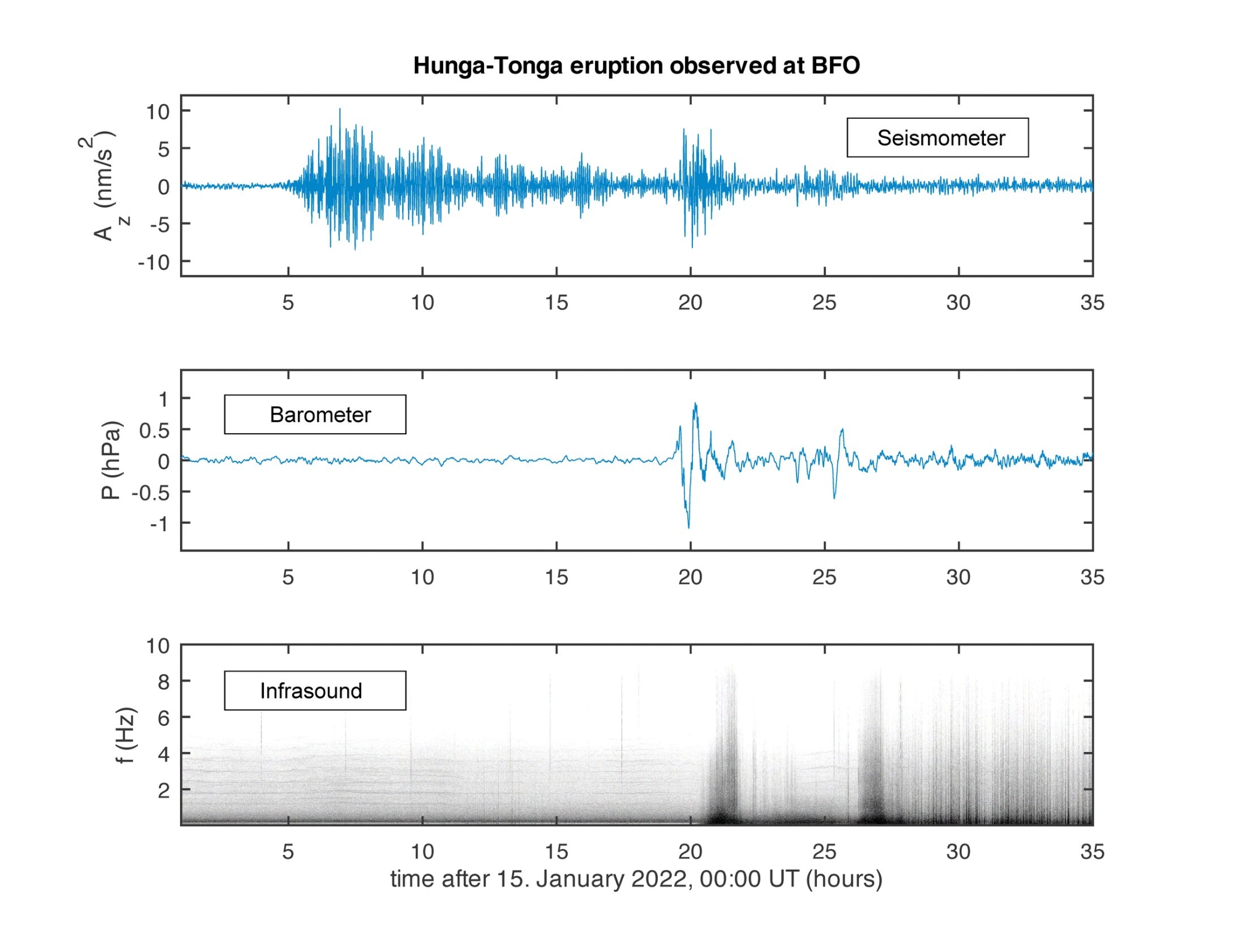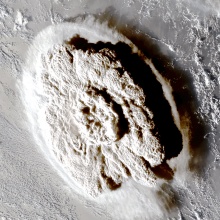The eruption began at 4:14 a.m. Universal Time (UT). At 5 a.m., the first seismic waves arrived at BFO in the Black Forest. It was not until 15 hours after the eruption that the first signals via the atmosphere (air pressure and infrasound) arrived at BFO
 Hunga-Tonga eruption observed at BFO / Rudolf Widmer-Schnidrig / Black Forest Observatory
Hunga-Tonga eruption observed at BFO / Rudolf Widmer-Schnidrig / Black Forest Observatory
All these waves circled the globe several times. Seismic surface waves take 3 hours for one orbit: hence the beating pattern in the seismic records with maxima at hours 7, 10, 13 and 16.
Acoustic waves take 37 hours to complete one orbit. The waves that came to us from Hunga-Tonga via the North Pole by the shortest route took 16 hours. The waves that came to us via Antarctica reach BFO 26 hours after the eruption.
The figures also show that the propagation velocity in the atmosphere is frequency dependent: low-frequency air-waves propagate faster than high-frequency infrasound.
The seismic signal is dominated by an oscillation at 3.7 mHz. This is the frequency at which the entire atmosphere above Tonga oscillates up and down, exciting the underlying solid earth/ocean to forced oscillations at this frequency. This atmospheric oscillation can be best pictured as a ¼ wave length organ pipe mode where the bottom end of the pipe is closed, and the top is open.
At the recording site in the black forest, the same coupling mechanism between atmosphere and solid Earth can be invoked for a second time to explain the enhanced ground shaking during the passage of the atmospheric waves (after 19 UT): here the Black Forest yields under the changing atmospheric air pressure.


